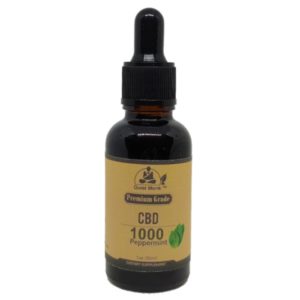
Rheumatoid Arthritis (RA) is a chronic autoimmune disorder that causes inflammation and pain in the joints, leading to stiffness, swelling, and reduced range of motion. According to a study published in the Journal of the American Medical Association, an estimated 1.5 million adults in the United States are affected by this condition. While there is no cure for RA, the current treatment options aim to manage symptoms and improve the quality of life for patients. However, these medications can have adverse side effects, leading many individuals to seek alternative forms of pain management. One such alternative is CBD, a hemp-derived compound that is gaining popularity for its potential health benefits.
There are various treatment options available for RA, including:
- Non-Steroidal Anti-Inflammatory Drugs (NSAIDs)
- Disease-Modifying Anti-Rheumatic Drugs (DMARDs)
- Biologic Response Modifiers (BRMs)
While these medications can help manage symptoms, they may also have adverse side effects such as stomach ulcers, liver damage, and increased risk of infections. This has led to a growing interest in alternative pain management methods, such as using CBD.
CBD, or cannabidiol, is a natural compound found in the cannabis plant. It is believed to have various therapeutic properties, including anti-inflammatory, analgesic, and neuroprotective effects. CBD works by interacting with the body’s endocannabinoid system, which helps regulate functions such as pain, inflammation, and immune response.
Research suggests that CBD may be effective in managing pain associated with RA due to its ability to interact with receptors in the body’s endocannabinoid system. Here are three ways CBD can help with RA pain management:
- CBD’s Anti-Inflammatory Properties: RA is characterized by inflammation in the joints, causing pain and stiffness. CBD has shown to have potent anti-inflammatory effects, which can help reduce inflammation, thus reducing pain and stiffness.
- CBD’s Effect on Pain Perception: CBD has been found to alter pain perception by interacting with receptors in the endocannabinoid system, leading to a reduction in pain sensation.
- CBD’s Ability to Reduce Joint Damage: RA can cause damage to joints over time, leading to disability and reduced quality of life. Studies have shown that CBD may help reduce joint damage and slow down the progression of the disease.
There are various ways to use CBD for RA pain management, including topical application, sublingual administration, and oral consumption. It is essential to consult with a healthcare professional before incorporating CBD into your treatment plan.
While CBD may offer relief for RA pain, it is important to note that it is not a cure and may not work for everyone. Additionally, CBD can have side effects such as dry mouth, drowsiness, and changes in appetite. It may also interact with certain medications, so it is crucial to consult with a doctor before use.
In conclusion, CBD shows promise as an alternative for managing RA pain, but more research is needed to fully understand its effectiveness and potential risks. It is essential to consult with a healthcare professional and follow the recommended dosage and administration methods for safe and effective use.

Key Takeaways:
CBD has anti-inflammatory properties that can help alleviate pain and inflammation associated with rheumatoid arthritis. Research shows that CBD may reduce joint damage and improve pain perception in individuals with rheumatoid arthritis. There are various ways to consume CBD, including topical application, sublingual administration, and oral consumption, for pain management in rheumatoid arthritis.
What is Rheumatoid Arthritis?
Rheumatoid arthritis is a chronic autoimmune disease that primarily affects the joints. This condition causes inflammation, pain, and stiffness in the affected joints, leading to reduced mobility and functionality. The immune system mistakenly attacks the body’s own tissues, resulting in gradual joint damage. While it commonly affects the hands, wrists, and feet, it can also impact other organs.
Managing rheumatoid arthritis requires ongoing treatment through medication, physical therapy, and lifestyle changes. If you have been diagnosed with this condition, it is crucial to work closely with your healthcare provider to create a personalized treatment plan. Suggestions for managing rheumatoid arthritis include:
- Regular exercise
- Maintaining a healthy weight
- Considering CBD as an alternative option for pain management
Current Treatment Options for Rheumatoid Arthritis
Rheumatoid arthritis is a chronic autoimmune disease that affects millions of people worldwide. While there is no known cure, there are several treatment options available to manage the symptoms and slow down the progression of the disease. In this section, we will discuss the current treatment options for rheumatoid arthritis, including non-steroidal anti-inflammatory drugs, disease-modifying anti-rheumatic drugs, and biologic response modifiers. Understanding these treatment options is crucial for those living with rheumatoid arthritis and seeking relief from its debilitating symptoms.
1. Non-Steroidal Anti-Inflammatory Drugs
Non-Steroidal Anti-Inflammatory Drugs (NSAIDs) are often used to manage symptoms of rheumatoid arthritis. Here are the steps to follow when taking NSAIDs:
- Consult a healthcare professional to determine the appropriate dosage and duration for your NSAID use.
- Take NSAIDs with or after meals to reduce the risk of stomach irritation.
- Follow the prescribed dosage schedule and do not exceed the recommended limit.
- Be aware of potential side effects, such as stomach ulcers, kidney problems, or cardiovascular issues.
- Inform your doctor about any other medications or supplements you are taking to avoid any potential drug interactions.
- Regularly discuss the effectiveness and safety of NSAIDs with your healthcare provider.
2. Disease-Modifying Anti-Rheumatic Drugs
Disease-modifying anti-rheumatic drugs (DMARDs) are a crucial class of medications used in the treatment of rheumatoid arthritis (RA). These drugs work by reducing inflammation and slowing down the progression of the disease. If you are considering using DMARDs, here are some important steps to keep in mind:
- Consultation: It is important to consult with your healthcare provider to determine if DMARDs are suitable for your condition.
- Evaluation: Your doctor will assess the severity of your RA and recommend the appropriate DMARDs for your specific case.
- Treatment plan: Work closely with your doctor to develop a comprehensive treatment plan that includes the specific DMARDs to be used.
- Medication administration: Be sure to follow the prescribed dosage and administration instructions for the DMARDs.
- Monitoring: It is important to regularly monitor your symptoms and report any changes or side effects to your doctor.
- Combination therapy: In some cases, DMARDs may be used in combination with other medications to optimize treatment outcomes for RA.
3. Biologic Response Modifiers
Biologic response modifiers are a type of medication used to treat rheumatoid arthritis (RA) by reducing inflammation and slowing down joint damage. Here are the steps involved in utilizing biologic response modifiers for managing RA:
- Consultation: Collaborate with a rheumatologist to determine if biologic response modifiers are suitable for your specific case of RA.
- Assessment: Your doctor will evaluate your overall health, disease activity, and potential risks and benefits of the treatment.
- Treatment Plan: If biologic response modifiers are deemed appropriate, your doctor will prescribe the correct medication and dosage.
- Administration: Biologic response modifiers are typically given through subcutaneous injections or intravenous infusions.
- Monitoring: Regular monitoring is necessary to assess the effectiveness of the medication and check for any potential side effects.
- Adjustments: Based on your response and disease activity, your doctor may make changes to the dosage or switch to a different biologic response modifier.
Remember, it is crucial to follow your doctor’s guidance and promptly report any concerns or side effects. Biologic response modifiers can be a valuable treatment option for managing rheumatoid arthritis, but individual responses may vary.
What is CBD and How Does it Work?

CBD, or cannabidiol, is a compound found in cannabis plants that does not produce a psychoactive effect. It interacts with the body’s endocannabinoid system, which regulates various functions like pain, inflammation, and immune response. CBD works by binding to cannabinoid receptors in the body, helping to reduce pain and inflammation. It can also influence serotonin receptors, providing potential benefits for mood and anxiety.
Although more research is needed, many people have reported positive effects of CBD for managing conditions like rheumatoid arthritis. For example, Sarah, a patient with rheumatoid arthritis, found relief from her pain and improved sleep quality after incorporating CBD oil into her treatment regimen.
How Can CBD Help with Rheumatoid Arthritis Pain?
Rheumatoid arthritis is a chronic autoimmune condition that causes inflammation and pain in the joints. As traditional pain management options often come with unwanted side effects, many individuals turn to alternative methods such as CBD. In this section, we will delve into the ways in which CBD may help alleviate pain associated with rheumatoid arthritis. From its anti-inflammatory properties to its ability to reduce joint damage, we will explore the potential benefits of using CBD as an alternative pain management option for this condition.
1. CBD’s Anti-Inflammatory Properties
CBD’s anti-inflammatory properties make it a promising option for managing the pain associated with rheumatoid arthritis. If you are considering using CBD for this purpose, here are some steps to follow:
- Consult with a healthcare professional to determine the appropriate dosage and delivery method for your specific needs.
- Choose a high-quality CBD product from a reputable source to ensure effectiveness and safety.
- Start with a low dosage and gradually increase as needed to find the optimal amount for relief.
- For localized relief, apply topical CBD products directly to the affected joints.
- For faster absorption and systemic effects, consider sublingual administration.
- For long-lasting relief, explore oral consumption options such as CBD capsules or edibles.
- Monitor your response to CBD and adjust the dosage if necessary to achieve maximum benefits.
- Be aware of potential side effects and risks, such as drowsiness or interactions with other medications.
- Continue to work closely with your healthcare provider to assess the effectiveness of CBD for managing your rheumatoid arthritis pain.
2. CBD’s Effect on Pain Perception
CBD has been discovered to have a beneficial impact on pain perception in individuals with rheumatoid arthritis. Research has demonstrated that CBD interacts with the body’s endocannabinoid system, which is responsible for regulating pain. By binding to specific receptors in the body, CBD can help decrease inflammation and relieve pain associated with rheumatoid arthritis. This makes CBD a potential alternative for managing pain in those seeking natural options. However, it is crucial to consult with a healthcare professional before incorporating CBD into your pain management routine.
3. CBD’s Ability to Reduce Joint Damage
CBD has shown potential in reducing joint damage in individuals with rheumatoid arthritis. Here are steps on how it can achieve this:
- Anti-inflammatory properties: CBD’s anti-inflammatory properties can help reduce inflammation in the joints, preventing further damage.
- Protection against oxidative stress: CBD acts as an antioxidant, protecting joint tissues from oxidative stress, which can contribute to joint damage.
- Modulation of immune response: CBD can modulate the immune system, reducing the excessive immune response that leads to joint inflammation and damage.
- Pain relief: By reducing pain, CBD can alleviate the stress on joints, promoting better joint health and minimizing the risk of further damage.
Incorporating CBD into a comprehensive treatment plan for rheumatoid arthritis can potentially slow down joint damage and improve overall joint health. Always consult with a healthcare professional before incorporating CBD into your treatment regimen.
How to Use CBD for Rheumatoid Arthritis Pain Management?
For individuals with rheumatoid arthritis, managing chronic pain can be a daily struggle. As the popularity of CBD as a natural remedy for pain relief continues to grow, many are wondering how to incorporate it into their pain management routine. In this section, we will discuss three methods of using CBD for rheumatoid arthritis pain management: topical application, sublingual administration, and oral consumption. By understanding the different methods, you can make an informed decision on how to effectively use CBD for your specific needs.
1. Topical Application
Topical application of CBD for managing rheumatoid arthritis pain can be an effective method to target specific areas. Follow these steps:
- Clean the affected area with mild soap and water.
- Dry the area thoroughly.
- Apply a small amount of CBD topical cream or oil to the affected area.
- Gently massage the CBD cream into the skin until fully absorbed.
- Repeat the application as needed, following the recommended dosage for the product.
Fact: Topical application allows CBD to interact directly with the skin’s cannabinoid receptors, providing localized relief.
2. Sublingual Administration
Sublingual administration is a highly effective method of using CBD for managing rheumatoid arthritis pain. It involves placing CBD oil or tincture under the tongue, where it can be quickly absorbed into the bloodstream through the sublingual glands. This method offers many benefits, including faster absorption and higher bioavailability compared to oral consumption.
To use CBD sublingually:
- Measure the desired dosage of CBD oil or tincture using the dropper provided.
- Place the measured dose under your tongue, directly on the sublingual glands.
- Hold the CBD oil or tincture under your tongue for 30-60 seconds to allow for absorption.
- Swallow any remaining liquid.
Sublingual administration has been utilized for centuries in traditional medicine to deliver medications directly into the bloodstream, bypassing the digestive system. This method allows for a faster onset of effects and has been proven effective in various medical treatments.
3. Oral Consumption
Oral consumption of CBD for rheumatoid arthritis pain management involves the following steps:
- Choose a high-quality CBD oil or capsule from a reputable brand.
- Consult with a healthcare professional to determine the appropriate dosage for your condition.
- Take the CBD orally, either by swallowing the capsule or using a dropper to place the oil under your tongue.
- Allow time for the CBD to be absorbed into your bloodstream, typically around 30 minutes to an hour.
- Monitor your symptoms and adjust the dosage as needed under the guidance of your healthcare professional.
- Continue regular use of CBD for long-term pain management and potential anti-inflammatory effects.
Possible Side Effects and Risks of Using CBD for Rheumatoid Arthritis
When considering the use of CBD for rheumatoid arthritis, it’s important to be aware of potential side effects and risks. These can include dry mouth, drowsiness, and changes in appetite. It’s also important to consult with a healthcare professional before starting CBD treatment, as it may interact with certain medications. Additionally, there is limited research on the long-term effects and safety of CBD. To minimize risks, it’s recommended to start with a low dosage, monitor your body’s response, and choose high-quality CBD products from reputable sources.
While CBD may offer promising benefits, it’s crucial to stay informed about potential side effects and consult with a healthcare provider.
Additional 6 Alternative Pain Management Strategies for Rheumatoid Arthritis Besides CBD
Introduction: Living with rheumatoid arthritis can be challenging, especially when managing the chronic pain associated with the condition. While traditional medications and treatments are effective, exploring alternative pain management strategies can provide additional relief and improve overall quality of life. Here are 7 alternative methods to consider.
- Acupuncture: Acupuncture, a traditional Chinese medicine practice, involves the insertion of thin needles into specific points on the body. Many individuals with rheumatoid arthritis find relief from pain and stiffness through regular acupuncture sessions.
- Turmeric Supplements: Curcumin, the active ingredient in turmeric, is known for its anti-inflammatory properties. Taking turmeric supplements or incorporating turmeric into your diet may help reduce pain and inflammation caused by rheumatoid arthritis.
- Mind-Body Techniques: Practices such as yoga, tai chi, and meditation can help manage pain by promoting relaxation and reducing stress. These mind-body techniques also improve flexibility and strengthen muscles, providing relief for individuals with rheumatoid arthritis.
- Heat and Cold Therapy: Applying heat or cold packs to affected joints can provide temporary relief from rheumatoid arthritis pain and inflammation. Heat therapy helps relax muscles and increase blood flow, while cold therapy reduces swelling and numbs the area.
- Massage Therapy: Regular massage therapy can help alleviate muscle tension, improve circulation, and reduce pain associated with rheumatoid arthritis. Targeted massages on affected joints can provide significant relief and improve mobility.
- Dietary Changes: Incorporating anti-inflammatory foods such as fatty fish, berries, leafy greens, and nuts into your diet can help reduce inflammation and alleviate rheumatoid arthritis pain. Additionally, avoiding processed foods and excessive sugar can contribute to overall pain management.
Conclusion: Exploring alternative pain management strategies for rheumatoid arthritis can complement traditional treatments and improve overall well-being. It’s important to consult with healthcare professionals before integrating these methods into your pain management plan to ensure they align with your specific needs and medical history. By incorporating these alternative strategies, individuals with rheumatoid arthritis can experience enhanced pain relief and better symptom management.



